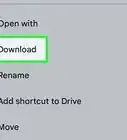This article was co-authored by Masha Kouzmenko. Masha Kouzmenko is a Meditation Coach and the Co-Founder of Silicon Valley Wellness, a company based in the San Francisco Bay Area that provides holistic health education services such as mindfulness meditation and yoga instruction to businesses. She has over five years of meditation and yoga instruction experience and specializes in guided meditation. She has a BA in Economics from the University of California, Berkeley.
wikiHow marks an article as reader-approved once it receives enough positive feedback. This article received 103 testimonials and 94% of readers who voted found it helpful, earning it our reader-approved status.
This article has been viewed 1,834,447 times.
Meditation has many benefits, relief from stress, anxiety and unnecessary thoughts being among them. If you want to get started in meditation, read this wikiHow article to learn more about it.
Steps
Preparing for Meditation
-
1Think about what you want to achieve with your meditation. People come to meditation for a wide range of reasons — whether to improve their creativity, help visualize a goal, quiet their inner chatter, or make a spiritual connection. If your only goal is to spend a few minutes every day being present in your body without worrying about everything you have to do, that’s reason enough to meditate. Try not to over-complicate your reasons for meditating. At its core, meditation is just about relaxing and refusing to be caught up in everyday anxieties.
-
2Find a distraction-free area to meditate in. Especially when you’re just starting out, it’s important to clear your environment of distracting sensations.[1] Turn off the TV and radio, close your windows against the street sounds outside, and close your door to noisy roommates. If you share your home with roommates or family members, you may find it difficult to find a quiet space where you can focus on meditation. Ask the people you live with if they would be willing to keep quiet for the duration of your meditation exercise. Promise to come tell them as soon as you’re finished, so they can resume their normal activities.
- A scented candle, a bouquet of flowers, or incense can be great little touches to enhance your meditation experience.
- Dim or turn out the lights to help you concentrate.
Advertisement -
3Use a meditation cushion. Meditation cushions are also known as zafus. A zafu is a circular cushion that allows you to sit on the ground while meditating. Because it does not have a back, as a chair does, it doesn’t let you slump back and lose focus on your energy. If you don’t have a zafu, any old pillow or sofa cushion will do to keep you from getting sore during long stretches of cross-legged sitting.
- If you find that sitting without a chair-back hurts your back, feel free to use a chair. Try to be present in your body and maintain a straight back for as long as it feels comfortable, then lean back until you feel you can do it again.
-
4Wear comfortable clothes. You don’t want anything to pull you out of your meditative thinking, so avoid restrictive clothing that might pull on you, like jeans or tight pants. Think about what you might wear to exercise or to sleep in — those types of loose, breathable clothes are your best bet.[2]
-
5Choose a time when you’re comfortable.[3] When you’re more familiar with meditation, you might use it to calm you down when you’re feeling anxious or overwhelmed. But if you’re a beginner, you may find it hard to concentrate at first if you’re not in the right frame of mind. When you’re starting out, meditate when you already feel relaxed — perhaps first thing in the morning, or after you’ve had to unwind after school or work.[4]
- Remove every distraction you can think of before you sit down to meditate. Grab a light snack if you’re feeling hungry, use the restroom if you need to, and so on.
-
6Have a timer at hand. You want to ensure you practice your meditation for long enough, but you also don’t want to break your concentration by checking the time. Set a timer for the length of time you wish to meditate — whether 10 minutes or an hour. Your phone may have a built-in timer on it, or you can find many websites and apps that will time your sessions for you.[5]
Meditating
-
1Sit on your cushion or chair with a straight back.[6] The upright posture helps you to concentrate on your breathing as you purposefully inhale and exhale. If you’re sitting in a chair with a back, try not to lean back against it or slouch. Stay as erect as possible.
- Position your legs in whichever manner is comfortable to you. You can extend them out in front of you or cross them beneath you like a pretzel if you’re using a cushion on the ground. The most important thing is that your posture remains straight.
-
2Don’t fret about what to do with your hands. In the media, we often see people holding their hands at their knees when meditating, but if that’s uncomfortable for you, don’t worry about it. You can fold them in your lap, let them hang at your sides — whatever allows you to clear your mind and concentrate on your breathing.
-
3Tilt your chin as though you’re looking downward. It doesn’t matter if your eyes are opened or closed when you meditate, though many people find it easier to block out visual distractions with closed eyes. Either way, tilting your head as though you’re looking down helps open up the chest and ease your breathing.
-
4Set your timer. When you’re in a comfortable position and are ready to get started, set your timer for however long you’d like to meditate. Don’t feel any pressure to reach an hour-long transcendental state during your first week. Start small with 3-5 minute sessions, and work your way up to half an hour, or even longer if you’d like.[7]
-
5Keep your mouth closed as you breathe.[8] You should both inhale and exhale through your nose when meditating. However, make sure your jaw muscles are relaxed, even though your mouth is closed. Don’t clench your jaws or grind your teeth; simply relax.
-
6Focus on your breathing. This is what meditation’s all about. Instead of trying not to think about the things that might stress you out on a day-to-day basis, give yourself something positive to focus on: your breath. By focusing all of your concentrating on your inhalations and exhalations, you’ll find that all other thoughts from the outside world fall away on their own, without you having to worry about how to ignore them.[9]
- Concentrate on your breathing in the way that’s most comfortable for you. Some people like to focus on how the lungs expand and contract, while others like to think about how air passes through the nose when they breathe.
- You might even focus on the sound of your breathing. Just bring yourself to a state of mind where you’re solely focused on some aspect of your breath.
-
7Observe your breath, but don’t analyze it.[10] The goal is to be present within each breath, not to be able to describe it. Don’t worry about remembering what you’re feeling, or being able to explain the experience at a later time. Just experience each breath in the moment. When it passes, experience the next breath. Try not to think about the breathing with your mind – just experience it through your senses.
-
8Bring your attention back to your breath if it wanders. Even when you’ve gained a lot of experience with meditation, you’ll find that your thoughts might wander. You’ll start thinking about work or bills or the errands you have to run later. Whenever you notice the outside world creeping in, don’t panic and try to ignore them.[11] Instead, gently nudge your focus back to the sensation of your breath in your body, and let other thoughts fall away again.
- You may find it easier to maintain your focus on inhalations than on exhalations. Keep this in mind if you find it to be true. Try to concentrate especially on the feeling of your breath as it leaves your body.
- Try counting your breaths if you’re having trouble refocusing your attention.
-
9Don’t be too hard on yourself.[12] Accept that focus will be hard for you when you’re just starting out. Don't berate yourself––all beginners experience the inner chatter. In fact, some would say that this continual return to the present moment is the "practice" of meditation. Furthermore, don’t expect your meditation practice to change your life overnight. Mindfulness takes time to exert its influence. Keep coming back to meditation every day for at least a few minutes, lengthening your sessions when possible.
Meditation Exercises and Resources
Expert Q&A
-
QuestionWhy is it hard for me to meditate?
 Marta NagorskaMarta Nagorska is a Nail Technician and Nail Art Blogger based in London, UK. She runs the blog, Furious Filer, where she gives tutorials on nail care and advanced nail art. She has been practicing nail art for over 5 years and graduated from Northampton College with distinction with a Nail Technician and Manicurist degree in 2017. She has been awarded the top spot in the OPI Nail Art Competition.
Marta NagorskaMarta Nagorska is a Nail Technician and Nail Art Blogger based in London, UK. She runs the blog, Furious Filer, where she gives tutorials on nail care and advanced nail art. She has been practicing nail art for over 5 years and graduated from Northampton College with distinction with a Nail Technician and Manicurist degree in 2017. She has been awarded the top spot in the OPI Nail Art Competition.
Nail Artist You might just need a little practice! The more you meditate, the more you'll become familiar with what distracts you. Just breathe in and relax, and you'll eventually be able to overcome distractions with practice.
You might just need a little practice! The more you meditate, the more you'll become familiar with what distracts you. Just breathe in and relax, and you'll eventually be able to overcome distractions with practice. -
QuestionHow long should I meditate as a beginner?
 James BrownJames Brown is a San Francisco Bay Area-based teacher of Vedic Meditation, an easy and accessible form of meditation with ancient roots. James completed a rigorous 2-year study program with Vedic masters, including a 4-month immersion in the Himalayas. James has taught thousands of people, individually, and in companies such as Slack, Salesforce, and VMWare.
James BrownJames Brown is a San Francisco Bay Area-based teacher of Vedic Meditation, an easy and accessible form of meditation with ancient roots. James completed a rigorous 2-year study program with Vedic masters, including a 4-month immersion in the Himalayas. James has taught thousands of people, individually, and in companies such as Slack, Salesforce, and VMWare.
Meditation Coach It can take a little time to get used to, so start with sessions that are only a few minutes long. Work your way up to meditating for 10–20 minutes at a time.
It can take a little time to get used to, so start with sessions that are only a few minutes long. Work your way up to meditating for 10–20 minutes at a time. -
QuestionHow long should I meditate if I'm just a beginner?
 Masha KouzmenkoMasha Kouzmenko is a Meditation Coach and the Co-Founder of Silicon Valley Wellness, a company based in the San Francisco Bay Area that provides holistic health education services such as mindfulness meditation and yoga instruction to businesses. She has over five years of meditation and yoga instruction experience and specializes in guided meditation. She has a BA in Economics from the University of California, Berkeley.
Masha KouzmenkoMasha Kouzmenko is a Meditation Coach and the Co-Founder of Silicon Valley Wellness, a company based in the San Francisco Bay Area that provides holistic health education services such as mindfulness meditation and yoga instruction to businesses. She has over five years of meditation and yoga instruction experience and specializes in guided meditation. She has a BA in Economics from the University of California, Berkeley.
Meditation Coach You can easily meditate for just a minute or two if that's all the time you have. Just try to make it a daily habit so it becomes part of your routine.
You can easily meditate for just a minute or two if that's all the time you have. Just try to make it a daily habit so it becomes part of your routine.
Warnings
- Be wary of any organization asking you for large amounts of money upfront to learn meditation. There are many people who enjoy the benefits of meditation and will be more than happy to help you for free.⧼thumbs_response⧽
- You might get visions and some of them might be horrible. Stop when it happens.⧼thumbs_response⧽
Things You'll Need
- Comfortable clothing
- Cushions/pillows may help
- A timer
References
- ↑ Masha Kouzmenko. Meditation Coach. Expert Interview. 26 March 2020.
- ↑ Masha Kouzmenko. Meditation Coach. Expert Interview. 26 March 2020.
- ↑ James Brown. Meditation Coach. Expert Interview. 3 April 2019.
- ↑ Masha Kouzmenko. Meditation Coach. Expert Interview. 26 March 2020.
- ↑ http://www.onlinemeditationtimer.com/
- ↑ James Brown. Meditation Coach. Expert Interview. 3 April 2019.
- ↑ https://www.psychologytoday.com/blog/in-practice/201303/5-meditation-tips-beginners
- ↑ http://breathmeditation.org/the-breath-of-life-the-practice-of-breath-meditation
- ↑ Masha Kouzmenko. Meditation Coach. Expert Interview. 26 March 2020.
- ↑ http://alifeofproductivity.com/wp-content/uploads/2013/05/Meditation-Guide.pdf
- ↑ Masha Kouzmenko. Meditation Coach. Expert Interview. 26 March 2020.
- ↑ James Brown. Meditation Coach. Expert Interview. 3 April 2019.
About This Article
Once you’ve found a meditation area free of noise, bright lights, and other distractions, sit on the floor or in a comfortable chair with your back straight and your chin down. Breathe in and out through your nose, and focus your attention on your breath. If your attention wanders, simply bring it back to your breathing. Continue breathing until your timer rings. For more advice, like how to wear comfortable clothing during your meditation, scroll down!



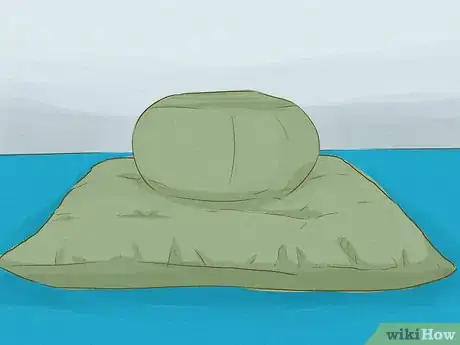

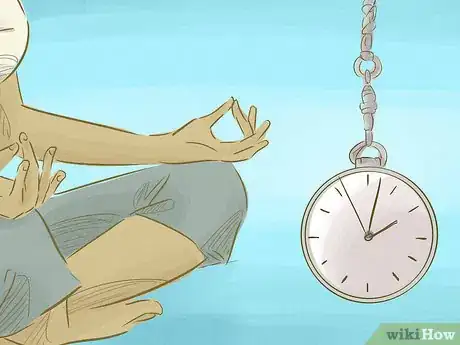

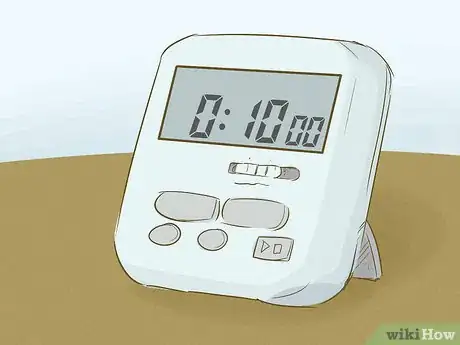
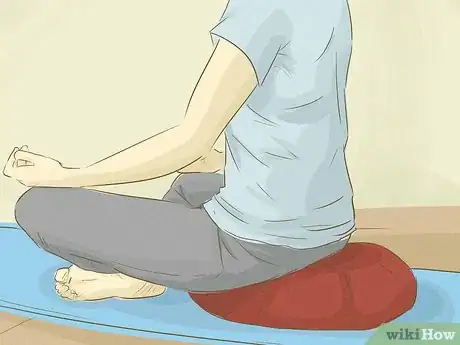


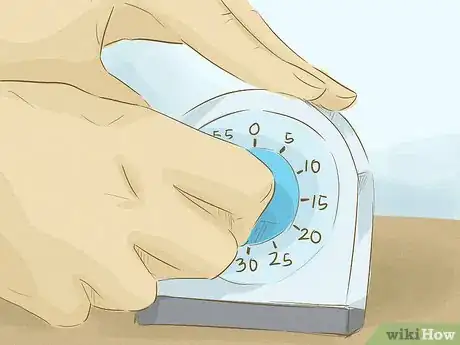
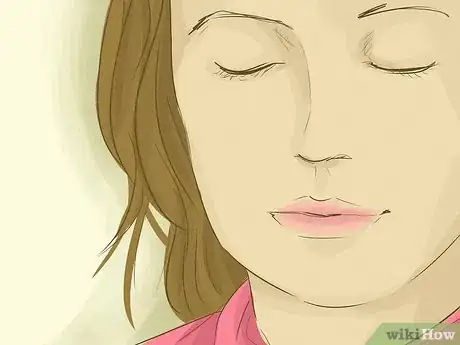


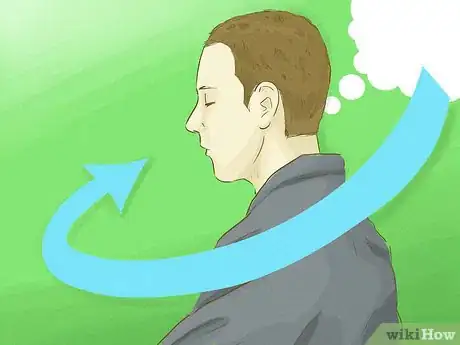

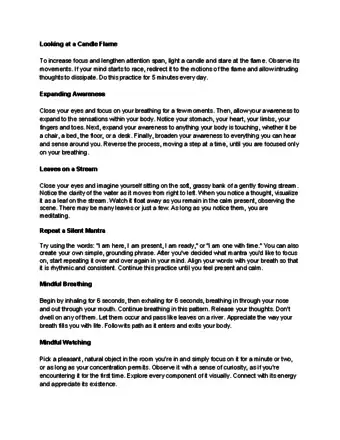














-Step-7-Version-2.webp)










